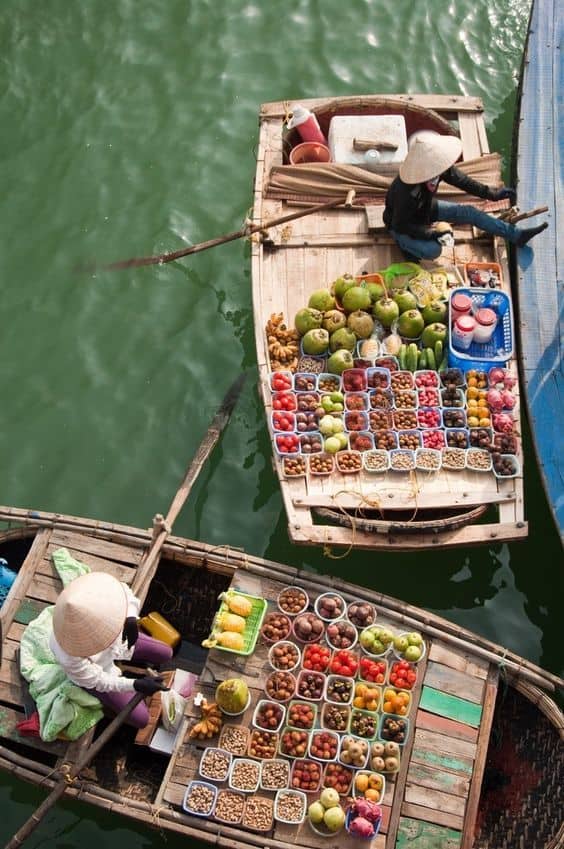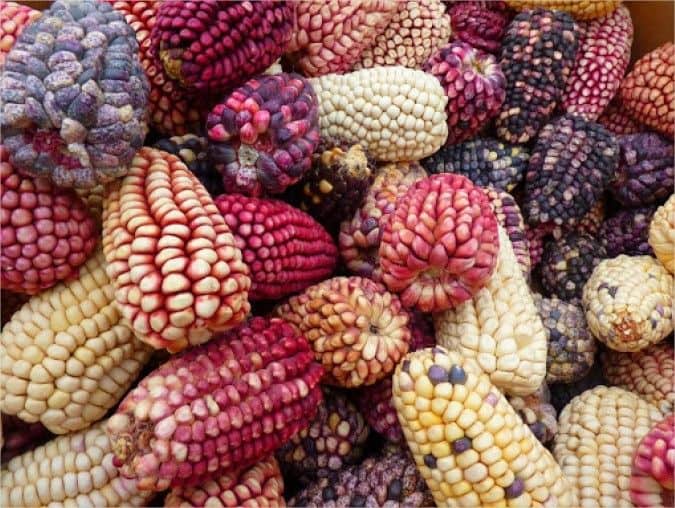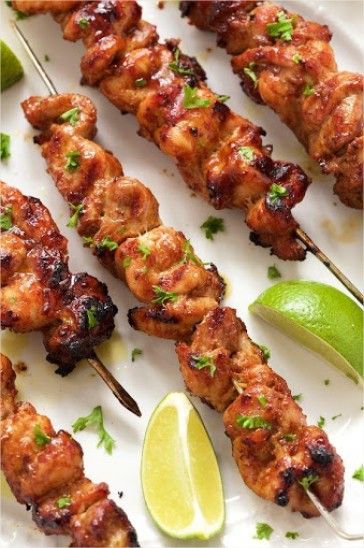Peruvian Food Culture
The Peruvian Culture in all its true sense or any country, in general, is not only a measure of all the beautiful places it’s surrounded with but rather the people, the locals, their faith, their history, their struggle, their culture and everything that comes in between. The arts, history, faiths, civilizations, beliefs, locations and food can be collectively form the pillars of Peruvian cuclture.
Today, we are going to discuss one aspect of the Peruvian culture, the art of Peruvian gastronomy, the food in Peru.
Background:
The food in Peru is a splendid mix of Indulgence coming forth from various cultures of the ancient traditions in Peru which adds more to its beauty and makes it unique, delicious and interesting.
Inca Traditions are the roots of Peruvian cuisine. Above all Incas were a source of many Peruvian gastronomy systems. They date back thousands of years and were a major source of many food systems in Peru. They also helped restore, transport and discover more food and the ingredients used over the course of years. Inca road, for instance, was used for transporting food, trade goods, both goods and people could be easily transported to and from the major Inca centers.
The variety of Peruvian food is too vast. Let us break it down for you!
Peruvian Food Culture: A Flavorful Secret
Peru has been home to culinary arts and distinct food culture for centuries. It is a flavorful secret which has unraveled before the world only recently. The ruins of the formidable Inca fortress that once stood proud in the city of Machu Picchu were Peru’s sole identity as a tourist destination in the world until the end of the twentieth century. The country realized its culinary potential and carved out for itself a place on the international gastronomic tourism map. The Peruvian food culture represents the evolution of this nation, its rich history, and diverse heritage. Read on to find out everything that you need to know about the Peruvian cuisine to savor its real delight.

Cuisine: The Inca Legacy
The heavens have blessed Peru twice when it is about the country’s culinary potential. First, it has been blessed by eighty-five distinct climates, freshwater and varied types of terrains which make organic production of innumerable species possible. Second, it became the fortress of the mighty Inca empire in Latin America, an empire which invested its time and effort in doing research to exploit the indigenous biodiversity to ensure food security.
Cultivation of maize, bell pepper, and indigenous herbs, as well as several other food crops in Peru, dates back to thousands of years ago, but the Inca civilization greatly upgraded the organic farming and incredibly diversified it. Peru has carried its legacy as its pride. It not only continues to use its traditional agricultural techniques but passes on the indigenous recipes to generations after generations. You may be able to taste delicacies which are centuries old, such as the Carapulcra which is pork and potatoes stew with a hint of Aji panca. Did you know that Carapulcra has been derived from a Quechua word which literally means “to cook on stones?” Interesting, isn’t it?

Indigenous Diversity
Inca civilization enabled the natives to diversify their agricultural production even at subsistence level. Peru not only grows a large number of crops, but it grows amazingly innumerable species of some fruits and vegetables as well. Aboriginal herbs and several fruits and vegetables which have been cultivated here since ancient times, Peru has a hundred different types of native corn grown in the country, of which the plus-size white maze of the Andes is known for not only its size and color but unique taste and the specialty of being grown only in this valley.

Potato chips may be the most enjoyed snack all across the world and attributed to the European food scene, but all of us owe all our potatoes to Peru. Potato is a staple food in this country and serves as a primary ingredient in the Peruvian cuisine, cherished for its three-thousand-plus native varieties as well as nutritional wealth. Quinoa, kiwicha, cacao and some varieties of the lagoon are native to this country alone and have become internationally known over the last decade or so.

The Peruvian Essence
The Peruvian food culture contains deep roots in its culinary heritage. It is a gastronomic manifestation of the country’s history and identity, for it is a product of preserved tradition. You could taste some two thousand different varieties of native soups or delight your sweet tooth to some two-hundred and fifty Peruvian desserts.
A serving of the ceviche treats you to the best seafood that the Pacific Ocean has to offer, while kapchi de habas lets one relish the tantalizing flavor of a native creamy potato and beans stew. You may choose to celebrate the Peruvian heritage with its most special meat dish, Cuy. Cuy is what the rest of the world knows as a guinea pig, but it is the rarest and the most special delicacy in this country. You may let the purple corn, the denizen of the Andes, lend a unique tinge to your choice of dessert with the Mazamorra Morada.

Peruvian cuisine has a unique aroma and flavor. It is enriched by the native herbs such as huacatay which is the Peruvian black mint, muña the Andean mint, chinch the Inca aromatic herb, paico the indigenous herb etc which have been in use for thousands of years and cooking practices which may stand as outdated to the outer world but are the secret ingredient to this country’s gastronomy. The main use of clay pottery and wooden spatula is for cooking. Large wooden ovens using conventional fire setups are used which enrich the food with an indigenous and peculiar flavor which no other cuisine in the world would let you savor.

The flavor of the Four Continents
If you choose to hit the street in Lima or Cusco, you would hear multiple languages ranging from the ancient Quechua and the colonial remnant of Spanish to French, Italian and Chinese. A Peruvian menu would reflect the same diversity. Peruvian cuisine has evolved over centuries, as the country has blossomed into a multicultural society post-colonization and the nineteenth-century immigration.
Culinary artists
Native culinary artists take pride in their evolution of the native cuisine and flaunt the origins of their inspired recipes. Nowhere else in the world but Peru can you enjoy Chifa, a range of Chinese cuisine inspired Peruvian recipes. You can find seventeen different types of cheese having Spanish influence over them and cooking practices said to have learned from modern Europe. Traditional culinary from South East Asia have generously bestowed their tinge upon the ancient Peruvian cuisine as well. Peruvian food is an experience of fusion of ancient traditions and present native flavor.
What Inca Delicacies Shall We Treat You With?
While you explore the ancient country, its distinctly beautiful culture and natural treasures, we shall serve the platter to ensure you experience the native Peruvian food culture to its delish best. Here is a sample menu we offer with our four days and three nights tour:
Day 1:
- BREAKFAST: Hotel Menu.
- SNACK: Banana, cookies, candies and coca leaves.
- LUNCH: Soup of kion (ginger) root.
- Trout roll with Chaufa rice with seafood and Criolla Salad.
- Purple Mazamorra tart.
- TE: Apple pie, mates and cookies.
- DINNER: White broth.
- Chicken skewers with potatoes
Day 2:
- BREAKFAST: Kiwicha (amaranth) crepes with goldenberries and quinoa oats.
- SNACK: Tangerine, biscuits, chocolates and candies.
- LUNCH: Vegetable soup.
- Tallarin saltado (pasta stir fry) with chicken and vegetables
- Strawberry mousse.
- TE: fried wantan, cookies and mates.
- DINNER: Cream of asparagus.
- Breaded veal in Chancaca sauce and Aji Panca, green rice and rustic mashed potatoes.
Day 3:
- BREAKFAST: Bacon, scrambled eggs and tamales cusquenos with toasts.
- SNACK: Apple, granola, chocolate, toasted chulpe corn and dried pineapple.
- LUNCH: Minestrone soup.
- Alpaca tenderloin in Huancaína sauce, garlic potatoes, broccoli puree and quinoa mash.
- Carrot cake.
- TE: cookies and mini sweet and savory sandwiches.
- DINNER: Corn cream.
- Quesadillas, native potato fries and salad.
Day 4:
- BREAKFAST: Swiss chard pie, French toast, quinoa with apple and mates.
- SNACK: Sandwiches of fried cheese, juices, peanuts with raisins and candies.
- LUNCH: Anticuchos (grilled meat on skewers) marinated in chicha and chili paste with potatoes and corn creamed corn.
- Lemon pie.
If you look forward to unraveling a flavorful secret, the Peruvian food culture shall be your ultimate love affair. Camina Los Andes is always here to provide you best Peruvian Andes trek tours.

